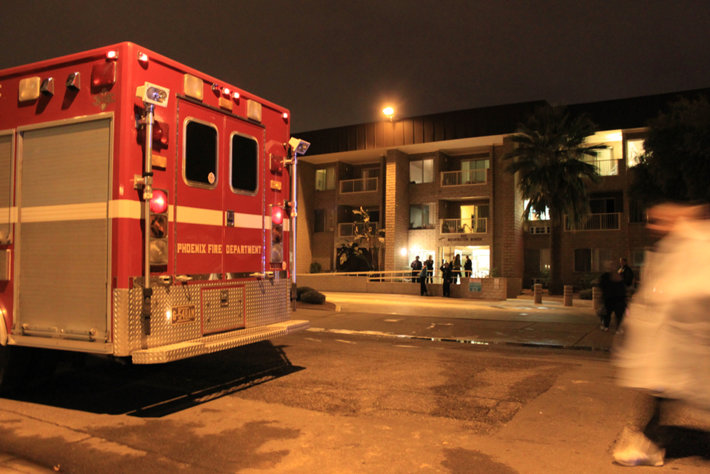Key Factors Creating the Highest Overdose Risk Among Drug Users

The loss of life to drug overdose is one of America’s most severe and heartbreaking problems. From fewer than 20,000 lives lost in 1999, the annual loss to drug overdoses hit 108,000 in 2022. Every life lost means a family whose hearts may never heal and a community that has lost the brightness and contributions of one of its members.
Opioid Drugs Are Front and Center… But They Aren’t the Only Drugs Taking Lives
Of course, the primary drugs causing overdose deaths in teens, young adults, and older adults are opioids like these:
- Heroin
- Fentanyl and dozens of fentanyl analogs such as sufentanil and carfentanil
- Authentic prescription medications like oxycodone or hydrocodone
- Synthetic opioids like U-44770 or isotonitazene
- Counterfeit pills that actually contain fentanyl, especially ones resembling generic oxycodone, Xanax, or Adderall
- Medications used in drug treatment programs such as methadone or buprenorphine
A dose of opioids that is too large targets the lungs, shutting down breathing. An opioid user begins to snore and gasp as they try to bring air into their lungs. These days, almost any illicit drug, whether pill, powder, or liquid, could contain a fatal dose of fentanyl. As fentanyl is cheap, drug dealers add it to batches of many other drugs to boost their effects or to increase the chance a customer will become addicted and thus return quickly for more drugs.
But stimulants like methamphetamine and cocaine also cause overdose deaths, as the strain on the cardiovascular system can be too great. A cardiac arrest, rip in the aorta, or heart attack can end a person’s life. Some people also lose their lives to overstimulation that causes increased blood pressure, heart rate, and body temperature. Seizures and delirium can result and cause death.
Overdose deaths have even been caused by psychedelics like DMT, ayahuasca, ketamine, and ecstasy.
Taking Steps to Prevent Fatal Overdoses

Many families with a loved one addicted to drugs have begun to ensure they have a supply of the opioid antidote naloxone on hand to reverse opioid overdoses. Community outreach staff and first responders also have this antidote. While naloxone is a life-saver in many situations, not every drug has such an antidote. Methamphetamine, cocaine, xylazine, and synthetic stimulants have none.
Any family or community member intent on saving lives from overdoses should also be aware that certain situations increase the likelihood that a person using drugs may fatally overdose. Even if that person has bounced back from overdoses before, due to changes in their health or even in the drug supplies, they may not survive the next overdose.
Situations That Increase the Risk of Fatal Overdose
Understanding one’s risks should include knowing and watching for these extra-risky conditions.
- Loss of tolerance due to not using drugs or using less. If a person has been hospitalized, in jail, or in rehab, they will lose their tolerance for the level of drug they were consuming before they stopped. If they try to use anywhere near the same quantity, they may immediately overdose.
- Change in drug supply, drug dealer, or type of drug. Some people stay with the same drug dealer all the time in an effort to control the potency of their supplies. If they have to change dealers, if there is an undetected change in the supply, or if they change the drug they purchase, they could unexpectedly encounter a stronger dose than usual.
- There are several types of drugs that either depress breathing or the central nervous system: opioids, alcohol, benzodiazepines (like Xanax or Valium), and muscle relaxants (like Soma). Any combination of these drugs can cause an unexpected overdose. It is worth noting that most drug overdose deaths involve a combination of drugs. Whereas one drug such as fentanyl may have brought the person close to an overdose, the presence of multiple drugs may have guaranteed their death.
- Some opioid users will mix the drug with a stimulant such as cocaine or methamphetamine in an effort to alleviate the sedative effect of the opioid, or just because the stimulant is readily available and cheap. As the stimulant masks the sedating effect of the opioid, the person may take a larger dose, resulting in an overdose.
- In a similar manner, cocaine masks the sedating effect of alcohol, encouraging a person to drink dangerous amounts. Alternately, using these two drugs together causes the body to manufacture a new substance, cocaethylene, which can team up with cocaine to cause an overdose.
- If a person starts an addiction treatment program that utilizes medication-assisted treatment, they may be given a medication such as buprenorphine or methadone. If they yield to a desire to get high by adding heroin or fentanyl on top of that treatment opioid, it is easy for them to overload their body with opioids.
Sometimes the changes are closer to home, as in the following situations which increase the risk of overdose:
- Certain health conditions increase the risk of fatal overdose. Chronic health conditions such as HIV, Hepatitis C, lung disease, heart disease, or other health concerns are associated with an increased risk of fatal overdose. While the reasons for this association are not well understood, a person who is newly diagnosed with these health problems should realize that their risks are greater.
- When there is a history of past overdoses, there is, not surprisingly, an increased risk of a future overdose that could be fatal.
- During the pandemic, many people were forced to use drugs alone, whereas their normal habit was to consume drugs in the company of others. A person using drugs alone is at greater risk of fatal overdose as there is no one to administer naloxone if they appear to be overdosing.
- A person who has been sober for a long time after completing rehab, or who has been using minimal drugs is at risk of overdose if they suffer a severe adverse event. Loss of a job, divorce, death of someone close to them, or other trauma could end their sobriety. With no drug tolerance, they are at very high risk for an overdose.
- As mentioned, some drug mixtures are very dangerous. Here are more bad combinations, whether illicit or prescribed:
– Sedative or hypnotic agents like zolpidem or eszopiclone
– Antipsychotics such as haloperidol, quetiapine, or risperidone
– Benzodiazepines, for example, alprazolam, lorazepam, or diazepam
– Muscle relaxants like carisoprodol, chlorzoxazone, or methocarbamol
– Any other central nervous system depressants such as alcohol or street drugs
Overdose Risk Boosters Are Common Among Young People

Among those aged 12 to 20, predictors of overdose include the following:
- Use of more than one drug at a time
- Co-occurring mental illness
- Unstable housing or homelessness
- Witnessing an overdose, especially of a family member
- Not having knowledge or experience using naloxone to reverse an overdose and not being around others who know how to use the antidote
- Having a history of blackouts
- Suffering alcohol use disorder
- Continuing to use drugs until the supply or money runs out (bingeing)
- Having thoughts of suicide
- Having a history of engaging in risky behavior
- Dissatisfaction with relationships
- Incarceration
- Experiencing emotional distress
Effective Rehab is the Best Solution
This list is a reminder of how easy it is to fatally overdose. We are currently losing more than 100,000 people a year to overdoses, approximately 75% of them to opioids. These are preventable deaths, every one of them.
A good, effective drug rehab is the right solution for drug abuse and addiction. It is vital to help a person who can’t stop using drugs get into an effective rehab program.
According to the National Institute on Drug Abuse, here are some of the guidelines to look for when choosing a drug rehab:
“No single treatment is appropriate for everyone. Treatment varies depending on the type of drug and the characteristics of the patients. Matching treatment settings, interventions, and services to an individual’s particular problems and needs is critical to his or her ultimate success in returning to productive functioning in the family, workplace, and society.
“Effective treatment attends to multiple needs of the individual, not just his or her drug abuse. To be effective, treatment must address the individual’s drug abuse and any associated medical, psychological, social, vocational, and legal problems. It is also important that treatment be appropriate to the individual’s age, gender, ethnicity, and culture.
“Remaining in treatment for an adequate period of time is critical. The appropriate duration for an individual depends on the type and degree of the patient’s problems and needs. Research indicates that most addicted individuals need at least 3 months in treatment and that the best outcomes occur with longer durations of treatment.” From Principles of Drug Addiction Treatment, 2014.
Sources:
- National Institute on Drug Abuse. “Drug Overdose Death Rates.” NIDA, 2023. NIDA.
- Centers for Disease Control and Prevention. “Provisional Drug Overdose Death Counts.” CDC, 2023. CDC.
- Centers for Disease Control and Prevention. “Stimulant Guide.” CDC, 2023. CDC.
- University of Washington. “Opioids and Stimulants: What Are They and How Are People Using Them?” UW, 2021. UW.
- National Library of Medicine. “Cocaethylene: When Cocaine and Alcohol Are Taken Together.” NLM, 2022. NLM.
- National Library of Medicine. “Relationship Between Cardiovascular Disease Pathology and Fatal Opioid and Other Sedative Overdose.” NLM, 2021. NLM.
- Department of Labor. “Risk Factors for Opioid Misuse, Addiction, and Overdose.” DOL, undated. DOL.
- National Library of Medicine. “Risk Factors for Drug Overdose in Young People: A Systematic Review of the Literature.” NLM, 2019. NLM.
- National Institute on Drug Abuse. “Principles of Drug Addiction Treatment.” NIDA, 2014. NIDA.


 ®
®